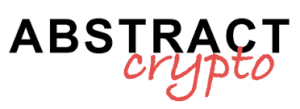With the imminent entry into force of new EU crypto regulations, a question arises: will it be necessary, or is it already necessary, to introduce MiCA 2.0?
Not surprisingly, policy experts are weighing in on calls for a new version of EU cryptocurrency market legislation.
Let’s look at all the details below.
MiCA 2.0 for better crypto regulation
The European Union’s groundbreaking new cryptocurrency regulations are scheduled to take effect on Thursday, marking the conclusion of two and a half years of legislative work.
However, as anticipated, financial policymakers are already urging the adoption of a second version of this law.
Markets in Crypto Assets (MiCA) was published in the EU Official Journal on 9 June and is expected to come into force on 29 June. This requires companies to comply with its provisions by that date.
Some regulations regarding stablecoins will come into effect within a year, while the rest will be implemented by the end of 2024.
However, although companies are trying to adapt to the new regime, Bank of France Governor François Villeroy de Galhau said at an event in Paris last week that regulators must now develop “MiCA 2.0” for better regulation of the crypto sector.
These comments resonate with repeated calls from European Central Bank President Christine Lagarde, who has advocated the importance of a MiCA 2.0 to address current loopholes such as decentralized finance (DeFi), lending and staking.
In any case, according to some sources, the European Commission has not yet started work on a second version of MiCA.
However, after 18 months, the Commission will be required to submit reports regarding some of the current gaps in the legislation.
These reports could address topics such as DeFi, lending, staking, and could also include non-fungible tokens (NFTs), which were not covered in the first version of MiCA.
Is MiCA 1.0 a comprehensive legislation?
We see that the start of any work on a new version would be contingent on the emergence of significant issues from the above reports. However, currently the focus in Brussels is primarily on the implementation of MiCA 1.
Laura Chaput, head of regulatory compliance at market maker Keyrock, commented on this by stating the following:
“MiCA 1 is, in my opinion, comprehensive legislation. It would be prudent for lawmakers to carefully evaluate its implementation, weighing its benefits against potential drawbacks, before considering further regulation. It is important to give industry time to adapt to the new regulatory framework and evaluate its effectiveness.”
However, Anne-Sophie Cissey, Flowdesk’s chief legal and compliance officer, pointed out that cryptocurrency regulation was “overdue,” and with traditional financial companies joining the blockchain, there was an urgent need for more clarity:
“With more opportunities come more responsibilities, and we need clear rules and oversight.”
We also note that although the industry has broadly embraced regulation, Keyrock’s Laura Chaput highlighted the risk of having too much of a good ‘thing,’ especially given that regulators are trying to address multiple issues related to the new technology:
“Given the numerous regulatory initiatives of the European Union, including MiCA, the new AML (Anti Money Laundering) regulation, the Travel Rule, the Data Act and the AI Act, it is essential to find a balance between introducing new regulations and the ability for industry to adapt and innovate.”
What could be included in MiCa 2.0: staking, NFTs and more
Although the actual implementation of a second version of MiCA may still be some way off, this has not stopped discussions in the industry about what should be included if the legislation is updated.
In this regard, Cissey stated:
“MiCA laid the foundation for the regulation of blockchain-based finance. But he stopped looking into specialized domains of DeFi uses like staking or on-chain lending. Also missing is the classification of tokens, including NFTs, as well as LP, utility and governance tokens and their relationship to financial instruments. This is a vital and potentially very controversial issue.”
Since customers are already using many of the innovations not covered by MiCA, it was stressed that they “deserve clarity and protection” in order to eliminate illicit actors operating in these areas.
Jon Helgi, former central banker and co-founder of digital euro token issuer Monerium, argued that a second version of MiCA should focus exclusively on cryptocurrency-related innovations, such as DeFi and decentralized autonomous organizations (DAOs), instead of covering existing regulated products.
In particular, he said cryptocurrency tokens should continue to be governed by current electronic money regulations:
“However, if MiCA 2 decides to include EMTs as part of the framework, it should review provisions to allow non-bank issuers access to central bank deposit facilities. This would provide equal opportunities for both banks and non-bank payment service providers to reap the benefits of blockchain technology without unnecessary restrictions.”


